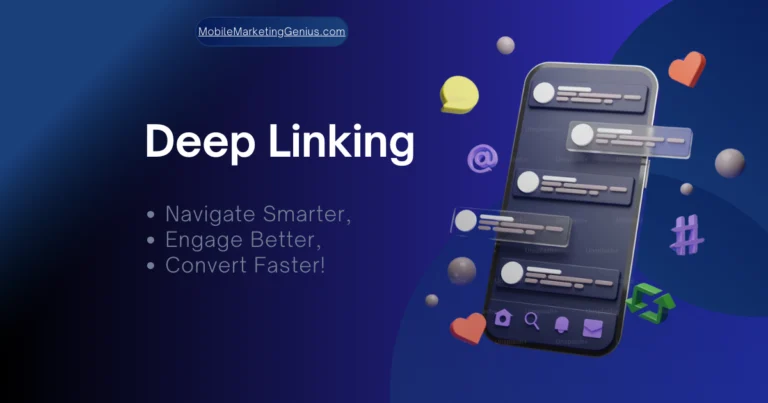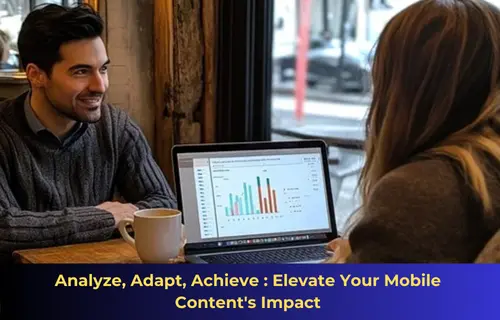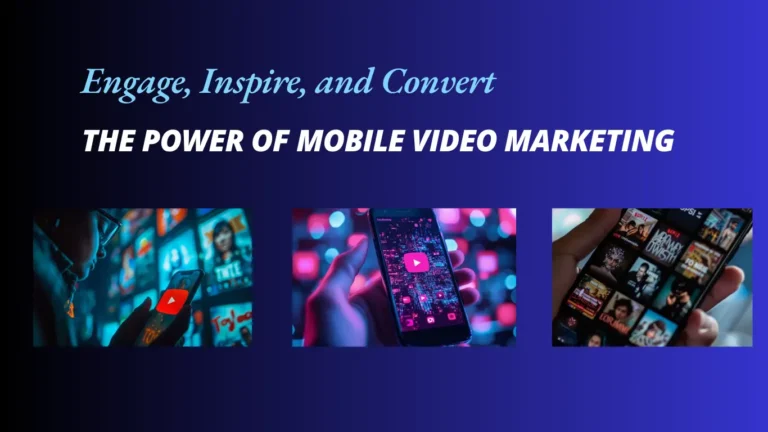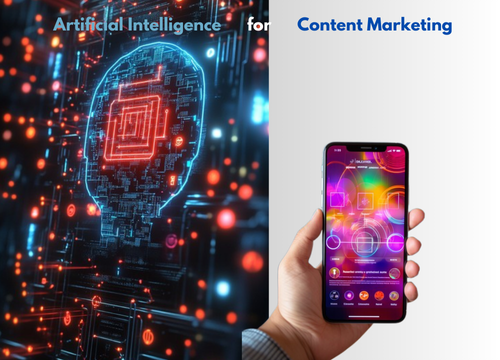Mastering the Mobile Marketing Funnel: Proven Strategies for Success

The concept of a funnel is one of the most widely used models in marketing, sales, and business. A funnel visually represents the journey that potential customers take, from their first interaction with a brand to becoming loyal customers. Its structure resembles an actual funnel, starting broad at the top to capture a large audience and narrowing down as prospects progress through various stages of engagement and decision-making.
At its core, the funnel is a strategic approach to understanding and optimizing how businesses interact with their audience. It provides a clear framework for guiding potential customers through a series of defined steps, such as raising awareness, nurturing interest, facilitating decision-making, and encouraging action. Each stage plays a critical role in converting casual visitors into committed buyers.
The importance of funnels lies in their ability to streamline efforts, allocate resources effectively, and enhance customer experiences. By identifying what works and where prospects drop off, businesses can refine their strategies to improve engagement, conversions, and retention. Whether in marketing campaigns, sales processes, or broader business initiatives, the funnel is a versatile tool that drives measurable results.
In today’s mobile-first world, the funnel has evolved to address the unique behaviors and preferences of mobile users. With shorter attention spans and a heavy reliance on smartphones, mobile marketing funnels are more critical than ever. This article explores the funnel’s application in marketing, sales, and business before delving into its transformative role in mobile marketing funnels. Over 58% of website traffic now comes from mobile devices. By understanding how to craft effective funnels, businesses can unlock unprecedented opportunities to connect with their audience.
Table of Contents
Defining the Funnel in Marketing, Sales and Business
What is a Funnel?
A funnel is a strategic model used in marketing, sales, and business to represent the customer journey from initial contact with a brand to a desired action, such as a purchase or subscription. The funnel metaphor reflects the gradual narrowing of potential customers as they move through different stages of engagement, with a broad audience entering at the top and a smaller group completing the journey at the bottom.

Shape and Structure of the Funnel
The funnel is divided into distinct stages:
- Top of the Funnel (TOFU): Awareness
This stage attracts potential customers, focusing on driving as much traffic as possible through broad-reach marketing methods like social media campaigns and SEO.- Objective: Capture a wide audience that may have no prior knowledge of the brand.
- Strategies: Broad advertising campaigns, content marketing, and social media outreach.
- Middle of the Funnel (MOFU): Consideration
Here, potential customers show interest in your product or service. They evaluate your offering through detailed product information, reviews, or consultations.- Objective: Engage prospects by answering their questions and showcasing your value proposition.
- Strategies: Retargeting ads, lead nurturing, and in-depth product guides.
- Bottom of the Funnel (BOFU): Conversion
This is where prospects are converted into paying customers. Strategies include clear calls-to-action (CTAs), optimized landing pages, and personalized offers.- Objective: Remove barriers to purchase and drive conversions.
- Strategies: Discounts, one-tap checkout, and compelling CTAs.
The Funnel in Marketing
Marketing funnels aim to drive awareness, engagement, and conversion. By focusing on tailoring messaging and strategy at each stage, businesses can optimize their return on investment (ROI). Below is a detailed breakdown:
Awareness Stage in Marketing
- Objective: Capture attention and drive traffic to your website, app, or store.
- Strategies:
- Leverage SEO to rank for high-volume keywords that attract potential customers.
- Use social media advertising on platforms like Instagram, Facebook, and TikTok to reach targeted demographics.
- Create engaging content marketing campaigns, such as blogs or videos, to establish authority in your niche.
The Funnel in Sales
The sales funnel hones in on lead qualification, relationship building, and closing the deal. The goal is to move prospects through a personalized journey.
Key Stages:
- Lead Generation: Use lead magnets, such as free eBooks, webinars, or guides, to attract prospects and collect contact information.
- Lead Nurturing: Build relationships with leads by providing valuable information through email sequences, tutorials, or consultations.
- Closing the Sale: Convert leads into paying customers with personalized pitches, limited-time offers, or free trials.
Example: A SaaS company attracts leads through free trial offers, nurtures them with email tutorials, and converts them by offering a discount for annual plans.
The Funnel in Business
In business, the funnel combines marketing and sales strategies to align short-term campaigns with long-term goals like retention and advocacy. By integrating automation tools and analytics, businesses can monitor the entire lifecycle of their audience, ensuring a consistent and optimized user experience.
Table 1 : Stages of the Marketing Funnel
| Stage | Objective | Key Strategies | Example |
|---|---|---|---|
| Awareness (TOFU) | Attract a large audience | SEO, social media ads, app store optimization (ASO), influencer marketing | Instagram ads for a fitness app showcasing quick workout routines |
| Consideration (MOFU) | Engage users and build interest | Retargeting ads, email campaigns, content marketing (e.g., blogs, tutorials), social proof | Retargeting ads for a fashion app reminding users about items left in their cart |
| Conversion (BOFU) | Drive purchases or desired actions | Mobile payments, discounts, deep linking, checkout optimization | A music streaming app offering a $1 trial for premium subscriptions |
| Retention | Keep users engaged and reduce churn | Push notifications, gamification, loyalty rewards | A food delivery app offering points for repeat orders |
| Advocacy | Turn users into advocates | Referral programs, positive reviews, social sharing features | A fintech app rewarding users with $10 for each successful referral |
The Funnel in Mobile Marketing
With mobile usage dominating digital interactions, mobile marketing funnels have become essential for success. Here’s how businesses can tailor the funnel for mobile audiences:
Awareness (Top of the Funnel – TOFU)
Goal: Attract mobile users and introduce the brand.
Strategies:
- Mobile SEO: Optimize for fast loading times and responsive design to rank higher in mobile search results.
- Social Media Ads: Platforms like Instagram, TikTok, and Snapchat are perfect for targeting mobile-first users.
- App Store Optimization (ASO): Use relevant keywords, high-quality visuals, and compelling descriptions to stand out in app stores.
- In-App Ads: Partner with apps in your niche to reach a targeted audience.
Example: A fitness app leverages TikTok to show 30-second workout tips, capturing attention with trending hashtags.
Consideration (Middle of the Funnel – MOFU)
Goal: Engage users and encourage them to explore the app or service.
Strategies:
- Retargeting Ads: Serve ads to users who visited your site or app but didn’t take action.
- Content Marketing: Create tutorials, explainer videos, or blog posts to showcase your app’s benefits.
- Social Proof: Highlight customer testimonials and app reviews to build trust.
- Email Marketing: Use personalized, mobile-optimized emails to nurture leads.
Example: A food delivery app sends personalized emails offering discounts on favorite items left in the user’s cart.
Conversion (Bottom of the Funnel – BOFU)
Goal: Drive purchases, subscriptions, or desired actions.
Strategies:
- Mobile Payments: Simplify transactions with Google Pay, Apple Pay, or PayPal integrations.
- Free Trials or Discounts: Encourage sign-ups with limited-time offers.
- Deep Linking: Direct users to specific in-app pages or deals.
- Checkout Optimization: Reduce friction with a one-tap checkout process.
Example: A streaming service offers a $1 trial for its premium plan to new users.
70% of app downloads come directly from searches within app stores.
Retention and Engagement (Post-Funnel)
Goal: Keep users engaged, reduce churn, and drive repeat purchases.
Strategies:
- Push Notifications: Send reminders about deals, new features, or upcoming deadlines.
- Gamification: Introduce badges, points, and challenges to keep users coming back.
- In-App Support: Provide live chat or self-help FAQs to resolve issues quickly.
Example: A travel booking app uses push notifications to remind users about flight deals based on their search history.
Only 25% of users return to an app after the first day of download. Push notifications can boost app engagement by up to 88%.
Table 2: Mobile Marketing Strategies by Funnel Stage
| Funnel Stage | Mobile-Specific Strategies | Example |
|---|---|---|
| Awareness | Mobile SEO, TikTok ads, app store optimization (ASO) | A language app using TikTok ads with a CTA to download the app |
| Consideration | Retargeting ads, mobile-friendly content, email follow-ups | A beauty app sending an email with product tutorials to undecided users |
| Conversion | Deep linking, mobile payments, free trials | A streaming service offering a one-tap upgrade to premium plans |
| Retention | Push notifications, gamified challenges, loyalty rewards | A fitness app encouraging daily workouts by offering badges |
| Advocacy | Social sharing features, referral rewards, positive reviews | A shopping app offering users credits for referring their friends |
Advocacy (Turning Users into Advocates)
Goal:
Encourage satisfied customers to promote the app.
Strategies:
- Referral Programs: Reward users with discounts or credits for every successful referral.
- Social Sharing Features: Enable users to share achievements, such as workout progress or rewards earned.
- Positive Reviews: Request satisfied users to leave ratings and reviews on app stores.
Example:
A fintech app offers $10 credits to users who refer friends, incentivizing word-of-mouth marketing.
Referral programs generate three times more high-quality leads compared to other channels (Nielsen, 2023).
Table 3 : Mobile-Specific Tools and Benefits
| Tool | Purpose | Benefit |
|---|---|---|
| App Store Optimization | Improve app visibility in stores | Increases downloads and improves rankings |
| Push Notifications | Send timely updates or offers | Re-engages inactive users and increases retention |
| Mobile Payments | Enable seamless transactions | Reduces friction and improves checkout conversion rates |
| Retargeting Ads | Re-engage users who dropped off | Boosts conversion by targeting high-intent users |
| Gamification | Encourage interaction through rewards | Enhances user engagement and fosters loyalty |
Table 4 : Benefits of Retention and Advocacy
| Retention Benefits | Advocacy Benefits |
|---|---|
| Lower cost of retaining users compared to acquiring new ones | Organic user growth through word-of-mouth marketing |
| Increased lifetime value (LTV) per user | Strengthens brand reputation through positive reviews |
| Enhanced engagement through loyalty programs | Boosts referral traffic and reduces acquisition costs |
| Higher app usage and reduced churn | Promotes trust and credibility among new audiences |
E-Commerce Apps

E-commerce apps are well-positioned to leverage the funnel in mobile marketin, as they benefit from users’ convenience and impulse purchasing behaviors on mobile devices. Below is a detailed application of the funnel:
- Awareness:
- Instagram Ads: Run visually appealing carousel ads showcasing trending products or seasonal collections.
- Example: A fashion retailer uses Instagram ads to display its winter jacket collection, targeting users interested in outdoor gear.
- Consideration:
- Push Notifications for Abandoned Carts: Encourage users to revisit their carts by offering discounts or reminders about stock availability.
- Example: A user who leaves a pair of shoes in their cart gets a notification: “Still thinking about these? Get 10% off if you complete your order in the next 24 hours!”
- Conversion:
- In-App Promo Codes: Offer exclusive discounts for purchases made through the app.
- Example: A home goods app provides a promo code—APP20—for 20% off the first in-app purchase.
- Retention:
- Loyalty Rewards for Frequent Shoppers: Introduce a points-based system where users earn points for every purchase and redeem them for discounts.
- Example: A grocery delivery app offers 1 point per dollar spent, with 100 points redeemable for $5 off future orders.
- Advocacy:
- Referral Programs: Reward users who invite friends with discounts or credits for each successful referral.
- Example: An electronics retailer offers a $10 credit for the referrer and 10% off for the referred friend on their first purchase.
Fitness Apps
Fitness apps capitalize on the growing interest in health and wellness by creating engaging and interactive experiences for users. Here’s how they can implement the mobile marketing funnel:
- Awareness:
- YouTube Ads: Use short video ads showcasing quick, beginner-friendly workout routines or app features.
- Example: A fitness app runs a video ad showing a 10-minute home workout, ending with a CTA: “Download now for free access to 5 routines!”
- Consideration:
- Free Trials of Premium Features: Allow users to try premium features such as guided workouts, progress tracking, or meal planning tools.
- Example: A user gets a 7-day trial of premium features upon signing up, with access to personalized workout plans.
- Conversion:
- Discounts on Yearly Subscriptions: Offer significant discounts for users who commit to a longer subscription plan.
- Example: A fitness app promotes a 30% discount on annual subscriptions for trial users upgrading within 7 days.
- Retention:
- Gamification and Progress Tracking: Introduce badges, streaks, or challenges to motivate regular app usage.
- Example: Users earn a “Consistency Champion” badge after completing 30 consecutive workouts.
- Advocacy:
- Social Media Challenges: Encourage users to share progress on social media with a branded hashtag to inspire their networks.
- Example: A “30-Day Plank Challenge” rewards users with free premium features for completing the challenge and sharing it on Instagram.
Gamification can increase app user activity by 47%.
Tips for Building a Successful Mobile Marketing Funnel
Creating a mobile marketing funnel requires thoughtful planning and continuous refinement. Below are detailed tips to ensure success at every stage:
Focus on Mobile-First Design for a Seamless User Experience
- Why It Matters: Mobile users expect fast-loading, visually appealing, and easy-to-navigate interfaces.
- How to Achieve It:
- Optimize app and website designs for mobile screens, ensuring responsive layouts and intuitive navigation.
- Use clear and prominent CTAs that are easily clickable on small screens.
- Ensure your app or site loads in under three seconds to prevent drop-offs.
- Pro Tip: Test your design across multiple devices and operating systems to ensure consistency.
Use Analytics Tools to Track User Behavior and Optimize Each Stage
- Why It Matters: Analytics provide insights into user actions, helping identify drop-off points and refine strategies.
- How to Achieve It:
- Integrate tools like Google Analytics, Firebase, or Mixpanel to track metrics such as session duration, click-through rates, and conversion rates.
- Set up event tracking to monitor user interactions with specific features, such as adding items to a cart or completing sign-ups.
- Pro Tip: Use A/B testing to evaluate the performance of different strategies, such as varying notification frequency or ad placements.
Segment Audiences to Personalize Engagement Strategies
- Why It Matters: Personalization increases relevance, making users more likely to engage with your content and offers.
- How to Achieve It:
- Divide users into segments based on behavior (e.g., active users vs. dormant users), demographics, or purchase history.
- Deliver targeted notifications, emails, or ads tailored to each group.
- Example: A fitness app can send diet tips to users tracking meals and workout reminders to those completing exercises.
- Pro Tip: Leverage AI tools to automate audience segmentation and improve targeting accuracy.
Continuously Test and Refine Funnel Strategies for Better Results
- Why It Matters: Regular optimization ensures that your funnel adapts to changing user behaviors and market trends.
- How to Achieve It:
- Perform usability tests to gather feedback on app or site navigation.
- Monitor real-time metrics like bounce rates and cart abandonment to identify areas for improvement.
- Experiment with new strategies, such as introducing rewards programs or varying ad formats.
- Pro Tip: Schedule monthly performance reviews of your funnel to implement incremental improvements.
Prioritize Retention as a Long-Term Goal
- Why It Matters: Retaining existing users is more cost-effective than acquiring new ones and boosts lifetime value (LTV).
- How to Achieve It:
- Implement loyalty programs, such as points-based rewards for frequent purchases.
- Send timely and personalized push notifications to re-engage inactive users.
- Offer exclusive access to new features or content for loyal users.
- Pro Tip: Conduct surveys to understand why users churn and address those issues proactively.
Additional Tips for Success
- Leverage Social Proof:
- Include testimonials, user reviews, and real-time activity trackers like “100 people purchased this in the last hour.”
- Example: Highlight app downloads or milestones to build credibility.
- Offer Multilingual Support:
- Expand your audience by providing content and support in multiple languages.
- Example: A travel booking app offers interfaces in English, Spanish, and Mandarin to accommodate global users.
- Incorporate Video Content:
- Use short, engaging videos to explain product features, showcase testimonials, or promote deals.
- Example: A subscription box service creates a 30-second unboxing video for Instagram ads.
Companies that prioritize mobile-first strategies see a 32% higher return on investment (Think with Google, 2023).
Table 5 : Key Metrics to Monitor for Funnel Success
| Metric | What It Measures | Why It Matters |
|---|---|---|
| App Downloads | Number of users installing the app | Indicates the effectiveness of awareness campaigns |
| Conversion Rate | Percentage of users completing the desired action | Measures funnel efficiency at driving action |
| Retention Rate | Percentage of users returning to the app | Tracks user satisfaction and engagement |
| Churn Rate | Percentage of users leaving the app | Helps identify issues impacting user retention |
| Referral Traffic | Users brought in through referrals | Shows the success of advocacy and referral programs |
Conclusion
A successful mobile marketing funnel is a powerful tool for driving growth and building long-lasting customer relationships. By understanding each stage of the funnel—awareness, consideration, conversion, retention, and advocacy—businesses can create engaging and efficient pathways that guide users from discovery to loyalty.
In today’s mobile-first world, businesses must adapt their strategies to align with user behaviors. Tools like app store optimization, gamification, push notifications, and personalized emails are essential for creating impactful experiences. When combined with analytics and continuous optimization, these strategies can help businesses achieve sustainable success.
Start building or refining your mobile marketing funnel today. Meet your audience where they are—on their mobile devices—and guide them toward conversion and advocacy.







One Comment
Comments are closed.